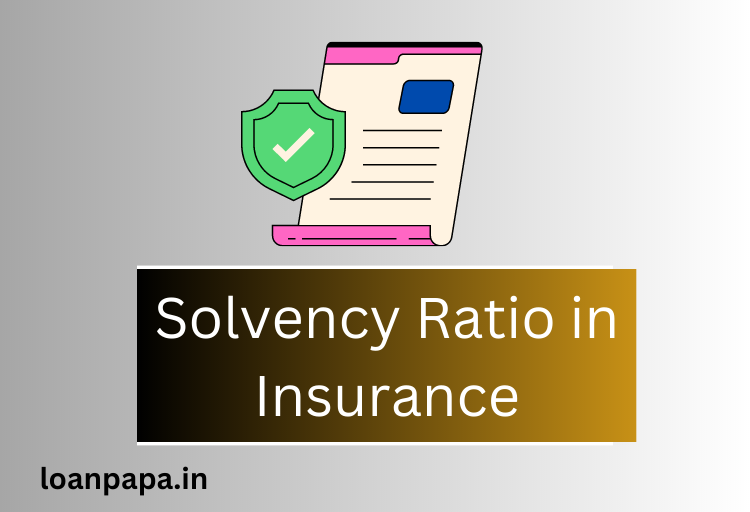
Contents
- 1 Solvency Ratio in Insurance
- 2 1. Introduction to Solvency Ratio
- 3 2. Why is Solvency Important in Insurance?
- 4 3. Calculating Solvency Ratio
- 5 4. Interpreting Solvency Ratio
- 6 5. Regulatory Requirements and Solvency
- 7 6. Types of Solvency Ratios
- 8 7. Industry Benchmark for Solvency
- 9 8. Maintaining Solvency: Strategies for Insurers
- 10 9. Solvency vs. Liquidity: Key Differences
- 11 10. Market Perception and Solvency
- 12 11. The Role of Reinsurance
- 13 12. Addressing Low Solvency Ratio
- 14 13. Future Trends in Solvency Management
- 15 14. Challenges in Solvency Assessment
- 16 15. Conclusion
- 17 FAQs About Solvency Ratio in Insurance
Solvency Ratio in Insurance
Solvency Ratio in Insurance: When it comes to the world of insurance, ensuring financial stability and the ability to meet policyholder claims is of paramount importance. This is where the concept of solvency ratio comes into play. In this article, we’ll delve into the details of solvency ratio in insurance, exploring its significance, calculation, and impact on the industry.
1. Introduction to Solvency Ratio
Solvency ratio is a vital financial metric used in the insurance industry to assess an insurer’s ability to meet its long-term obligations, particularly policyholder claims. It serves as a measure of financial strength and stability.
2. Why is Solvency Important in Insurance?
Solvency is crucial in insurance to instill confidence in policyholders that their claims will be honored even in adverse scenarios. A strong solvency position assures the policyholders that their investments are safe.
3. Calculating Solvency Ratio
Solvency ratio is calculated by dividing an insurer’s total assets by its total liabilities. The resulting ratio indicates the proportion of assets that can cover liabilities.
4. Interpreting Solvency Ratio
A solvency ratio above 1 indicates that the insurer has more assets than liabilities, implying a financially sound position. A ratio below 1 raises concerns about the insurer’s ability to fulfill obligations.
5. Regulatory Requirements and Solvency
Regulatory bodies set minimum solvency ratios that insurers must maintain. This prevents insolvency and protects policyholders’ interests.
6. Types of Solvency Ratios
6.1. Current Solvency Ratio
This ratio focuses on short-term solvency and considers current assets against current liabilities.
6.2. Quick Solvency Ratio
Also known as the acid-test ratio, it assesses immediate liquidity to cover short-term obligations without relying on inventory.
6.3. Debt Solvency Ratio
This ratio evaluates the proportion of debt in an insurer’s capital structure and its ability to manage long-term debt payments.
7. Industry Benchmark for Solvency
The industry benchmark for solvency ratios can vary by jurisdiction and line of insurance. It’s essential to compare ratios within the same industry segment.
8. Maintaining Solvency: Strategies for Insurers
Insurers can maintain solvency by prudent investment practices, risk diversification, and setting aside reserves for potential claims.
9. Solvency vs. Liquidity: Key Differences
Solvency focuses on long-term financial stability, while liquidity pertains to an insurer’s short-term ability to meet obligations.
10. Market Perception and Solvency
A high solvency ratio enhances an insurer’s reputation in the market, leading to increased investor confidence and potential business growth.
11. The Role of Reinsurance
Reinsurance transfers a portion of risk from one insurer to another, thereby bolstering the ceding insurer’s solvency position.
12. Addressing Low Solvency Ratio
If an insurer’s solvency ratio is low, it can take corrective measures such as raising capital, reducing risky investments, or adjusting premium rates.
13. Future Trends in Solvency Management
Advancements in data analytics and predictive modeling are expected to refine solvency assessment and management strategies.
14. Challenges in Solvency Assessment
Solvency assessment involves dealing with complex variables, regulatory changes, and uncertainties in predicting future claims.
15. Conclusion
In conclusion, the solvency ratio is a critical measure that safeguards the stability of insurance companies and protects policyholders’ interests. Maintaining a healthy solvency ratio is not only a regulatory requirement but also a strategic imperative for insurers to thrive in a competitive landscape.
FAQs About Solvency Ratio in Insurance
What is a solvency ratio in insurance?
A solvency ratio in insurance is a financial metric used to gauge an insurer’s ability to meet its long-term obligations, particularly policyholder claims.
How is solvency ratio calculated?
Solvency ratio is calculated by dividing an insurer’s total assets by its total liabilities.
Why is solvency important in the insurance industry?
Solvency is crucial as it assures policyholders that their claims will be honored even during challenging times, fostering trust in the insurer’s financial stability.
What happens if an insurer’s solvency ratio is low?
A low solvency ratio raises concerns about the insurer’s financial strength and ability to meet obligations. The insurer might need to take corrective measures to improve the ratio.
How does reinsurance impact solvency?
Reinsurance transfers risk from one insurer to another, reducing the impact of large claims and enhancing the ceding insurer’s solvency position.
Read also:
Education Loan to Study in the UK: Your Pathway to International Education
Exploring the Key Features of Life Insurance: Your Ultimate Guide
Understanding Snapmint Personal Loan: Bridging Financial Gaps with Transparency and Ease
Types of Marine Insurance: Protecting Your Maritime Ventures
